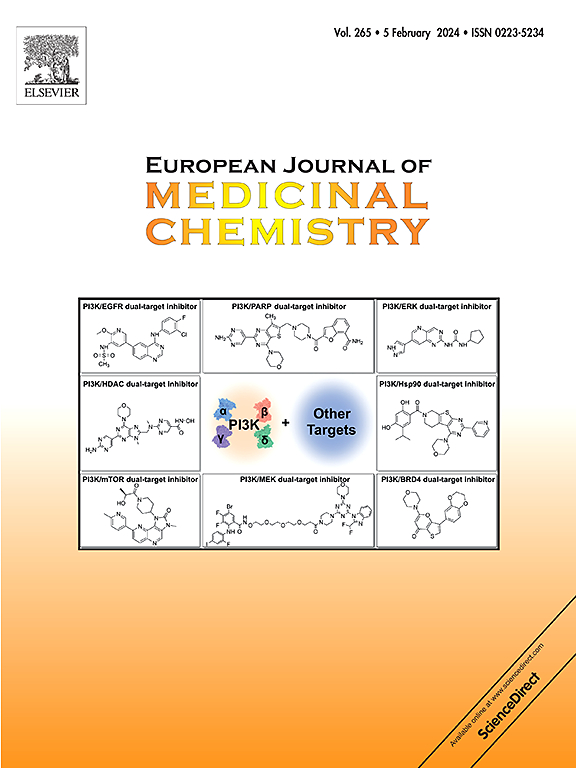The Groebke–Blackburn–Bienaymé (GBB) Reaction: A Powerful Tool for Generating Diverse Heterocyclic Scaffold Libraries in Anticancer Drug Discovery
IF 6
2区 医学
Q1 CHEMISTRY, MEDICINAL
引用次数: 0
Abstract
The Groebke–Blackburn–Bienaymé (GBB) reaction is a versatile multi-component (MCR) synthetic methodology that has transformed anticancer drug discovery by enabling the rapid and efficient generation of diverse heterocyclic scaffolds. These scaffolds, such as imidazo[1,2-a]pyridines, imidazo[1,2-a]pyrimidines, and their derivatives, are highly valuable moieties for targeting critical cancer pathways. The modular nature of the GBB reaction, coupled with post-reaction modifications, allows the design of compounds with tailored structures and enhanced pharmacological properties. GBB-derived compounds exhibit broad anticancer potential by modulating diverse molecular targets. These include protein kinases (e.g. Rock2, Gsk3β, B-Raf), microtubule dynamics via tubulin inhibition, and G-quadruplex DNA stabilization in oncogene promoters (e.g., c-MYC, BCL2), disrupting key mechanisms of tumour progression. Moreover, they target epigenetic regulators such as HDACs, CBP/P300 bromodomains, and BET bromodomains, affecting transcriptional regulation and chromatin remodeling. Immune checkpoints (e.g., PD-1/PD-L1), enzymes such as autotaxin, TDP1, and Hsp90, as well as apoptotic regulators (e.g., Bcl-2, BAG3), are also effectively inhibited. More importantly, these compounds address challenging targets, including KRAS G12C mutations and the menin–MLL interaction, offering solutions to previously "undruggable" pathways. The unparalleled efficiency of GBB reaction and its ability to generate structurally diverse, bioactive compounds spanning multiple oncogenic mechanisms highlights its central role in advancing anticancer drug discovery and its transformative impact on therapeutic innovation.

求助全文
约1分钟内获得全文
求助全文
来源期刊
CiteScore
11.70
自引率
9.00%
发文量
863
审稿时长
29 days
期刊介绍:
The European Journal of Medicinal Chemistry is a global journal that publishes studies on all aspects of medicinal chemistry. It provides a medium for publication of original papers and also welcomes critical review papers.
A typical paper would report on the organic synthesis, characterization and pharmacological evaluation of compounds. Other topics of interest are drug design, QSAR, molecular modeling, drug-receptor interactions, molecular aspects of drug metabolism, prodrug synthesis and drug targeting. The journal expects manuscripts to present the rational for a study, provide insight into the design of compounds or understanding of mechanism, or clarify the targets.

 求助内容:
求助内容: 应助结果提醒方式:
应助结果提醒方式:


